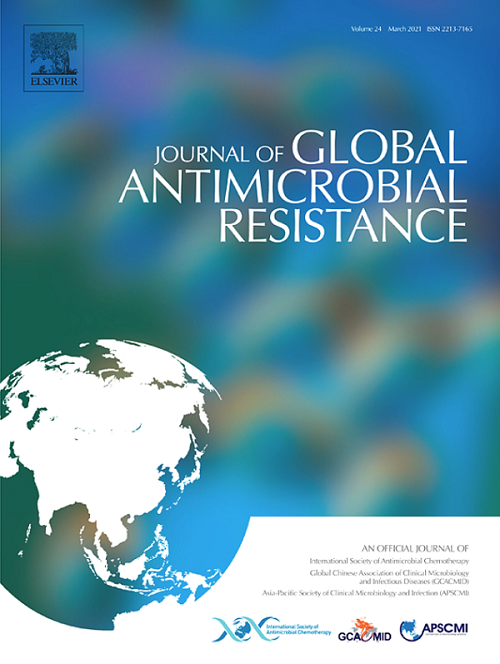Heterogenic bacterial resistance to low concentration of ketamine
IF 3.7
3区 医学
Q2 INFECTIOUS DISEASES
引用次数: 0
Abstract
AIM
We aimed to evaluate the impact of sub-inhibitory ketamine concentration on enterococcal cells including changes in b-lactam resistance.
BACKGROUND
It becomes clear that not only the antimicrobial drugs, designed to stop the proliferation of bacteria can fulfil that purpose. Our previous study showed that immunosuppressive drugs - tacrolimus and cyclosporine - change the expression of penicillin-binding proteins in enterococcal cells. Among others is ketamine, a substance with a 50-year-long history of anaesthetic and anti-microbial potential. However, nowadays it is used mainly in anti-depressive therapy in concentrations significantly below its minimal inhibitory concentration (MIC) for the majority of bacteria. On the other hand, it is known that even the concertation of a chemical lower than inhibitory for bacteria may change the properties of the microbe.
METHODS
27 enterococcal clinical strains were isolated as the etiological agents of infection. Each isolate was co-incubated with ketamine in a concentration equal to the maximum plasma concentration of the substance in the blood of the patient undergoing anti-depressive therapy. To measure the changes in viability of cells treated with ketamine, carboxyfluorescein diacetate succinimide ester staining followed by flow cytometry analysis was used. Changes in penicillin susceptibility were tested using an xCeLLigence RTCA instrument.
RESULTS
11 of the strains were found to be resistant to the therapeutic ketamine concentration while diversity among non-inhibited ones suggests the heterogeneity of the resistance.
CONCLUSIONS
The impact of non-antimicrobial drugs on bacterial resistance should be considered as an additional treatment to increase the rate of successful antimicrobial therapy.
求助全文
约1分钟内获得全文
求助全文
来源期刊

Journal of global antimicrobial resistance
INFECTIOUS DISEASES-PHARMACOLOGY & PHARMACY
CiteScore
8.70
自引率
2.20%
发文量
285
审稿时长
34 weeks
期刊介绍:
The Journal of Global Antimicrobial Resistance (JGAR) is a quarterly online journal run by an international Editorial Board that focuses on the global spread of antibiotic-resistant microbes.
JGAR is a dedicated journal for all professionals working in research, health care, the environment and animal infection control, aiming to track the resistance threat worldwide and provides a single voice devoted to antimicrobial resistance (AMR).
Featuring peer-reviewed and up to date research articles, reviews, short notes and hot topics JGAR covers the key topics related to antibacterial, antiviral, antifungal and antiparasitic resistance.
 求助内容:
求助内容: 应助结果提醒方式:
应助结果提醒方式:


